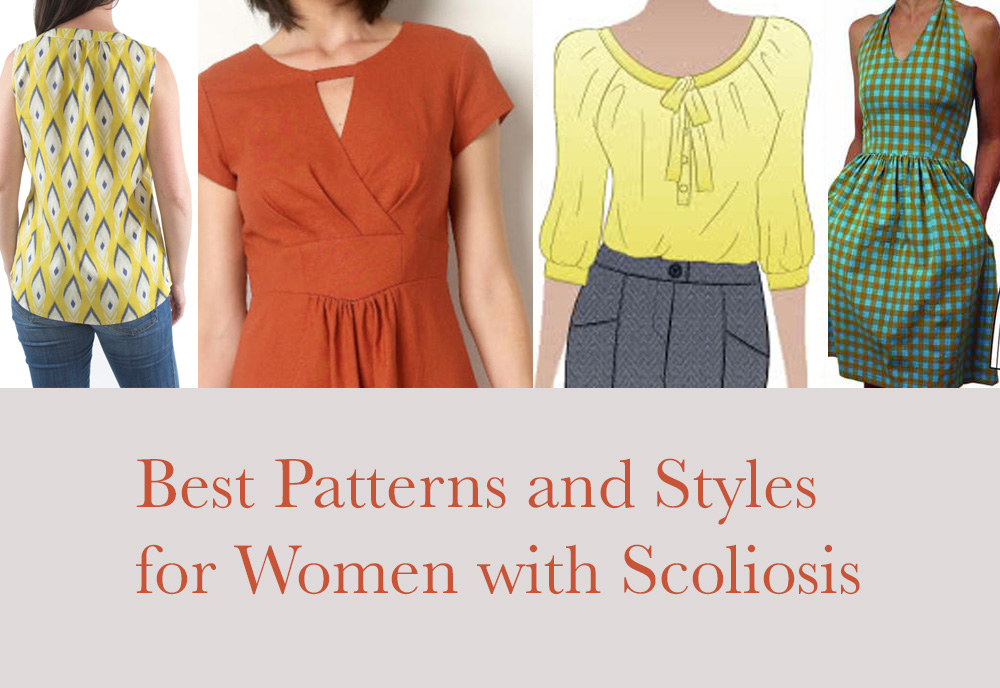
We all want to look good. It doesn’t matter how old or young you are, if you’re in a satisfying relationship or looking to date, if you are social or shy.
If you won the genetic lottery then it’s easier, I would imagine, but not winning that lottery, or having or not having other physical characteristics outside what society at large considers “perfect” doesn’t mean we have given up or that we can’t feel good about how we look. (Besides, being perfect is not possible. Let me just pop that bubble for you right now)
Recently a reader asked if I had any advice on styles and patterns for someone with scoliosis and how to alter patterns for scoliosis.
I did some research and then asked on The Daily Sew Facebook page if anyone had suggestions. One lady commented wouldn’t the world be a better place if we could all dress for our own bodies? That clothing was available for all shapes, not just sizes.
It sort of does, if you know what styles look best for your shape, and it really does if you know how to sew and alter for your shape.
When dressing, some people advise us to hide our (perceived) flaws but I think that only has us thinking too much about our flaws and, not sure about you but, when I think about my flaws too much I don’t feel that great about myself. So, let’s highlight our assets instead. Then no one will notice the flaws we are ignoring.
Think about what you like about your body; lips, eyes, wrist, calves, backside, bust, smile, fingers… There’s a lot to pick from so choose a few then find clothing or accessories that show these off.
Example:
- Lips? wear lipstick
- Eyes? wear earrings to bring attention to the face, wear a color that brightens your eyes, wear mascara
- Wrist? wear bracelets, 3/4 length sleeves
- Calves? wear skirts, dresses, leggings
- Backside? pencil skirts, cropped or tucked in tops
- Bust? wear v-necks, necklaces, and always a great fitting bra
And if you really want to learn this approach (plus learning so much else) I highly recommend signing up for Stasia’s Style School, which is where I picked up this idea of focusing on the good stuff.
After shining the light on your favorite features, it’s normal for us to still feel self-conscious of the areas we don’t particularly care for. Yes, it is a pity that we base our feminity, sometimes our self-worth, on our appearance. Let’s acknowledge that almost all of us do this. Let’s also acknowledge that what we put on our bodies affects how we feel and act.
Wear clothes that you feel powerful in and you will walk with your head a little higher, shoulders back, ready to take on whatever challenge you need to face this day. Wear clothes that you feel or know or think make you appear how you want to appear to the world, and you will be more confident. So, let’s work with this. Let’s dress to show off what we like and be more comfortable with the rest.
This post let’s talk about styles to fit the woman with scoliosis and show some patterns in these styles. Later this week I’ll post how to alter a pattern to fit a protruding shoulder blade. Plus how to alter a raglan sleeve top or a pattern with a back yoke to fit.
General fitting tips
For uneven shoulders add a little padding to your low shoulder instead of altering the pattern to fit your high shoulder. It’s much easier to do and the padding can be hidden by lining the garment. Many men have one shoulder that drops (it’s lower than the other). To solve this issue, tailors pad up the dropped shoulder in the suit jacket. For winter coats, blazers, tailored shirts, heck, even store bought jean jackets, sew in some shoulder padding to even out your shoulder height.
Never underestimate the power of a great fitting bra. A bra that fits well and supports the breast will create space between the bust and the hips, visually lengthening the torso. Clothing will drape better and you will be more comfortable. Racerback bras can be more comfortable than the traditional bra strap pattern when you have a shoulder blade that protrudes. Third Love makes a few racerback styles that you get to try on at home and I understand they have wonderful customer support.
Loose-fitting garments are more comfortable and will not ride up on your high hip. The ideal garment, one that is worth your sewing time, will be loose but not appear to be sloppy. And for that, you’ll want some fit in the garment. Maybe it’s fitted around the collar bones and sternum or has fitted sleeves or maybe the top is loose but the bottoms are lean.
When your outfit is loose all over you’re comfortable, for sure, but are you motivated to do anything other than curl up with a book or watch Doc Martin? When your clothes signal to you it’s time to chill, you need extra willpower and energy to do otherwise. So, loose is good, but not always everywhere.
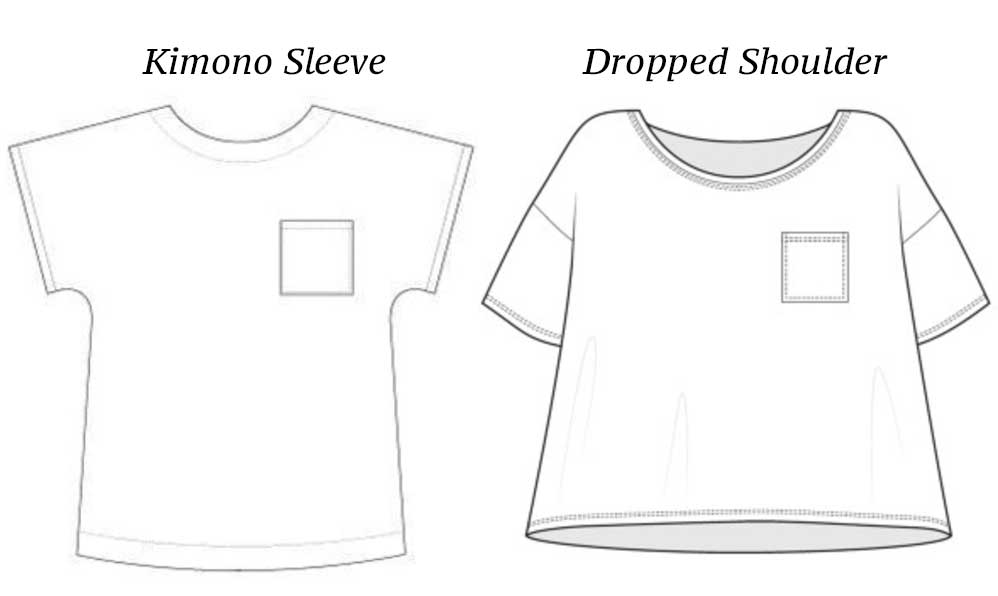
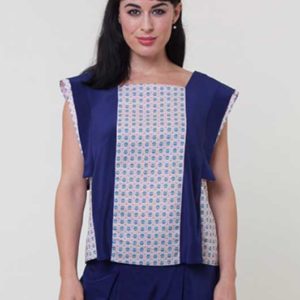
So many patterns today have a kimono sleeve or a dropped shoulder seam. This silhouette can make a woman with any sort of a chest, or thick waist, look like a linebacker or a tank. It does this because of the excess fabric it puts under the arm and beside the bust. Getting that underarm area clear of excess fabric creates space and looks flattering. The kimono sleeve style isn’t for most of us but it’s popular because it’s an easy pattern to both draft and to sew.
Styles and patterns with seams near the neck and extra seams around the shoulders allow you more opportunities to fine tune the fit in these areas. Because each seam can be let out or pinched in as needed.
If you have very little distance between your bust and your hips you may wish to avoid styles with waist seams in order to fit the torso better OR raise the waist seam to go just under the bust, an empire waistline, or an inch or so below the bust, a raised waistline. The seam line cutting across the torso will give the torso more shape.
When you have uneven hips you may think you want to always cover them but consider hemming a top or shirt shorter, what might be called a cropped top. The shorter length top or jacket draws the eye to your top half, away from the hips. It also avoids riding up on a high hip and if the top swings out slightly from the body, it will skim, or skim over the high hip, in a graceful movement. Horizontal lines will visually chop a body too so, try this style out in solids first not horizontal stripes unless you’re tall 😉 and maybe in a monochromatic outfit.
And
When you feel good it radiates so wear clothes and accessories that make you feel good and in colors you like. Your favorite color is not “your color”? Wear it in a bottom, a shoe, a contrasting cuff, a bracelet, your socks and underwear. Or wear it next to your face and don’t care or put on makeup.
To try out some different styles with minimal cost investment purchase some new for you styles from thrift stores and “test drive” them a few times before buying a pattern, or fabric, in that style. Now, this is a little hard because finding a garment that fights right in the first place is the problem. But some items might be found to try out.
Fabrics are a consideration too. First, wear fibers you’re comfortable in. We all have our favorites and those we won’t ever wear. Then think colors, textures, and prints.
Rayons, lightweight silks and other lightweight flowy fabrics are great for skimming the body and having a lot of movement. Novelty knits can act almost like a print. One that is very deep could overwhelm a small frame.
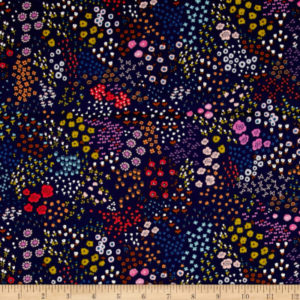
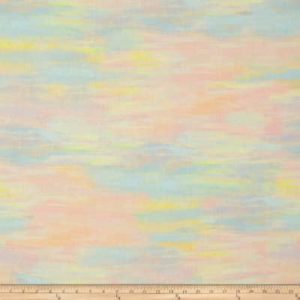
Prints with organic shapes like florals, swirls, paisleys, or a “watercolor” look really camouflage body features. Busy prints do too but geometric prints can emphasize any asymmetry (stripes, boxes or grid type prints, plaids, and gingham).
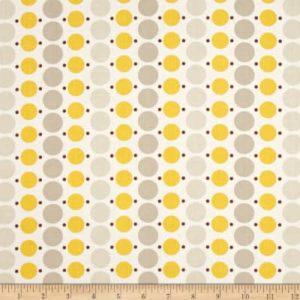
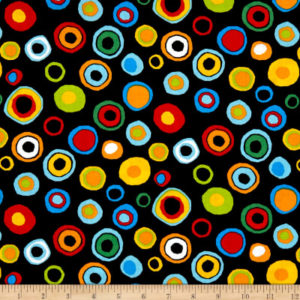
Polka dots and florals which are laid out on a grid can be more geometric than organic. Look for dots and florals that are more free-formed and/or slightly random or off-grid. Or small dots that make the overall print busy or dots and florals so small the fabric appears almost solid.
What styles are best for women with scoliosis? And what sewing patterns are available?
Each photo is a link to that pattern. All of these patterns are available for sale on the date this post was published.
I’ve put links to the patternmaker’s own site and shop but if you prefer to buy all your independent patterns from one shop check out IndieSew and Oliver +S. Both sites carry a wide array of independent patterns for your convenience.
Racerback tanks
Usually thought of as sporty, you could also make this style up in rayon to wear with slacks, maybe a scarf or necklace for an evening out.
Why the racerback?
The scooped out back armhole can be more comfortable on a shoulder blade that protrudes from the back. The size of the scoop can be made larger, brought closer to center back if you need it to.
Get the Durango Tank Pattern for free here
Halter necklines
A halterneck dress is a great option for formal dresses but also for sundresses and tops. This style can be worn with a shaw when the weather is cooler.
Why a halter neck?
This style’s open back makes fitting much easier. The straps traveling up and around to the back of the neck, will bring attention to your face and neck. Halter necks can be filled in or cut low in the front. There are many different styles of halter neck bodices, try them.
Get the Rose City Halter Dress here
Cowl neck or a draping front
This style is glamorous and flattering for many. It can come in lightweight tanks for hot weather and in heavy knits for cold weather. But it’s not just for knits or slinky wovens, this style can also be found made up in cotton shirting.
Why a cowl neck?
The draping neck or front draws attention to it, and therefore, takes attention away from uneven shoulders, uneven hips, and no waist definition. The draping front can add glamor so this is always a good choice for disco dancing ;-), date night, or if you just want to kick it up a notch.
Get Vogue 9006 here.
Get Itch-To-Stitch Plitvice Top pattern here or here
Get Sew Over It Cowl Neck Dress pattern here
Empire-waist or raise waist dresses and tops
The empire waist cuts just under the bust and a raised waist is about an inch under the bust. Think baby doll tops, Jane Austen period movies, and Greecian dresses. Think tunics, casual dresses, and fancy dress. Long sleeve, short sleeve, sleeveless. Gathered, or tailored. This high waist is very versatile
Why an empire or raised waist?
Many women with scoliosis appear to have very little length between their bust and their hips. This style gracefully floats over the hips making your torso appear longer. If the pattern you pick out has a waistband, not just a seam, you could shorten the waistband (really shorten it if you need to) to fit better or perhaps, eliminate it entirely. in a pattern you In a dress, this style is very comfortable around the waist and hips.
Note that the Lisette dress has both a cut out on the chest and an asymmetric bodice, both great for drawing the eye to the chest and for visually balancing a curved body.
See more photos of and get Sis Boom Meghan Peasant Dress pattern here or here
Get Hot Patterns Weekender Chameleon Dress pattern here
Get Lisette for Butterick B6168 here or here
Swing or trapeze coats and capes
Swing coats were very popular in the 1950’s so today they can have a vintage charm to them. But you can also find the swing in very modern designs too. The swing silhouette works long or short in heavy wool for winter, corduroy for fall and brocade for a fancy evening out. The movement they make when wearing one makes it you feel more energetic, or at least more glamorous.
Why a swing coat or cape?
The swing coat flows away from the body as high up as the neck. This gives the coat more room across the back and the hips for wearing comfort. The swing movement in the coat when the wearer walks is very pleasing and draws the eye to the movement and away from the shoulder and upper back.
Note the soft flowy Victory pattern trench coat. While not a swing coat it still floats away from the body with the cape falling even farther away from the body.
Get Sandra Betzina for Vogue V1494 Coat and Vest pattern here
Get Victory Patterns Ulysess trench coat pattern here or here
Get Simplicity 8509 here
Peplum tops
Peplums have recently come back in style, although they never really disappear due to its flattering silhouette and feminine style. A peplum can be full or flair out slightly. They can be on fitted shirts, casual tops, jackets and added to dresses and skirts.
Why peplum tops?
The peplum itself will cover any hip height differences. The peplum seam defines a waist, or gives one the idea of a waist, great for a shortened torso. Raise the peplum seam to where it falls on you best.
Get Simplicity 8417 Peplum top pattern here
Get New Look 6511 Easy Peplum top and dress pattern here
Get Threads for Simplicity 8604 Peplum jacket pattern here
Asymmetric styles
Asymmetry can throw the eye off. It’s always a little fun, a little unexpected, and usually appeals to those with an artistic nature. Asymmetry can be just at the hem, or a wrap style top, one shoulder, pleats or gathers on one side. Asymmetric clothing can be casual or dressy and certainly, it can be for every day.
Why asymmetric styles?
Our bodies are asymmetric so why not our clothes too? Especially if the direction of the asymmetry of the garment is in the opposite direction as the asymmetry of our bodies, or of the curves in our bodies. It’s treating like with like. Is it the garment? or is it the body underneath? Who can tell? You can flip patterns too to have the strongest style line going opposite your curve. Like drawing an X across your torso, and suddenly it appears a lot more symmetrical.
Note the top in the NewLook pattern has pleats at one shoulder but it also has a cropped, raglan sleeve jacket, which is a good style for asymmetric bodies.
Get Marci Tilton Vogue V9057 top pattern here
Get Butterick Katherine Tilton B6357 vest or top pattern here
Get Burda 6443 dress and top pattern here
Get New Look 6532 pattern here
Get McCall’s M7760 Melissa Watson top and cardigan pattern here
Get Burda 6459 Shirt pattern here
Peasant blouses and dresses
Peasant blouses can be very bohemian but they don’t have to be. Done in a deep color, and an added pocket placket, they can look sophisticated. But the option is always there to take one good peasant blouse pattern and take it in different directions including lengthening it into a dress.
Why a peasant blouse?
The round slightly dropped neckline and fullness gathered into it, take the emphasis off the shoulders. The fullness floats over the shoulder blade. If the blouse has a raglan sleeve then altering the back bodice and sleeve to fit over a prominent shoulder blade just got easier.
Get True Bias Roscoe Dress and shirt pattern here
See Fabrics-Store.com tutorial here
Get Style Arc Katherine Blouse pattern here
Shoulder yokes
You might be thinking western wear when you think of shirts with yokes but yokes can be any shape, deep or narrow, casual or tailored. Yokes are the piece from the shoulder to somewhere above the bust apex. Sometimes they have a shoulder seam and sometimes they don’t but there is always a seam where they join the bodice and from which fabric hangs. Shirts with full gathers at the yoke tend to be more casual, but done in a drapy fabric with sheen can be quiet dressy with a feminine feel. A shirt with slight gathers at the yoke allows the fabric to float over the chest smoothly, a flattering look. Other shirts, like the western shirt, have no gathers at the yokes.
Why shoulder yokes?
If the bodice is full and gathered into the yoke it will drape softly over the body. This covers, uneven hips, and again, lengthens the torso. A shoulder yoke, whether it supports gathers or not, is an extra seam in the garment to adjust and fine tune for a better fit. You can easily add more length to the yoke on one side of the garment for a high shoulder or to fit over a prominent shoulder blade. Since yokes can draw attention to them (There’s that western shirt again) look for a deep yoke to draw attention toward the chest and away from the shoulder and consider keeping the yokes in the same fabric as the bodice. Yokes in a contrasting fabric, a different texture fabric, like lace, or yokes with a stripe going in a different direction than the bodice will draw the eye to the shoulders.
Note that Burda 6456 also has a flounce option to draw the eye to the chest and face. And Vogue 8689 has princess seams which make many fitting adjustments easier.
Get Hey June Handmade Biscayne Blouse pattern here or at IndieSew
Get Tessuti Alice Top and Dress pattern here
Get Vogue V8689 shirt pattern here
Get Itch-To-Stitch Chirripo top pattern here or here
Get Burda 6456 shirt pattern here
sleeveless, A-line dresses and tops
Crop tops or shirts hemmed to be cropped
Fear not the crop top. They may be cropped on other folks but you may find they hit you in a good spot. And raising your arms doesn’t mean you’ll be flashing your mid-drift, especially with the high waisted trend that’s coming back. A cropped top is a top hemmed above your hips.
Why the cropped length?
For those of us with a high natural waist, a cropped top or a shirt hemmed shorter than hip length will make us look more in proportion. It’s far more flattering for a horizontal line to go across your body at it’s thinner spot than it is to go across at you widest spot (mid hips for most of us). Also, a shirt higher than the hips will have some movement (unless it’s tight) which is nice, and won’t ride up on a high hip.
Note: Sew House Seven offers a raglan sleeve version which can make adjusting the fit of the back easier. And Tessuti’s Hazelwood top is a swing style top.
Get Simplicity 8466 Mimi G Style pattern here
Get Tessuti Hazelwood Top pattern here
Get Sew House Seven’s popular Toaster Sweater pattern here, or Simplicity’s version here
The boxy, cropped jacket
You may automatically think classic Channel jackets but there are other styles to pick from too, soft cardigans (Boden offers a cropped cashmere and a cotton cardi), jean jackets, even moto style jackets come cropped. A layering piece is essential so make a few.
Why the cropped jacket or cardigan?
A boxy jacket hanging straight from the shoulders to above the hips can hide, without covering, the waist, and short torso. It skims over the top of the hips and you could shorten it more to hit exactly where you need it. A cropped jacket or cardigan is good for women with a high waist or full hips. It draws the eye up, away from the hips.
Remember with jackets, even casual ones, you can add padding to your low shoulder to even out uneven shoulders. Choose the size that best fits your high shoulder and alter the back if needed, then add padding under the lining. Not lined? Add the padding and cover just the padded area with a piece of fabric from the garment, or which closely matches the garment
Note: Morris Blazer is made in a sturdy knit for comfort, has a hem detail and a graceful shawl collar to draw interest away from the shoulders. And the Jenna Cardi pattern has the option to omit the yokes.
Get Sewing Muse Jenna Cardi pattern here or at IndieSew
Get Threads for Simplicity 8604 pattern here
Get Grainline Studio Morris Blazer here or at IndieSew
High waisted jeans & leggings
Many women with scoliosis, really like high waisted jeans. And they don’t have to be “mom jeans”. In fact, when you make them yourself they don’t even have to be blue jeans. And, well, leggings. They’re certainly comfortable and they’re great under tunics, and under skirts and dresses when it’s cold outside.
Why high waisted jeans?
The higher rise means the waistband is not digging into your hip so it’s more comfortable. And high rise pants are great companions for cropped tops.
Note Closet Case offers an add-on pattern to make the Ginger jeans with a flared leg. This pattern must be good. A lot of sewist rave about making them. Megan Nielsen Patterns just released a high waist jean pattern.
Jalie is known for their quality activewear patterns. These leggings will be well constructed.
Get Closet Case Ginger Jeans pattern here or here
Get Jalie’s Clara High Waisted Legging pattern here
Some companies will make or allow you to make custom patterns. As I explore and research more I will add to this, for now, list of two
Up Next: How To Alter a Pattern for Scoliosis


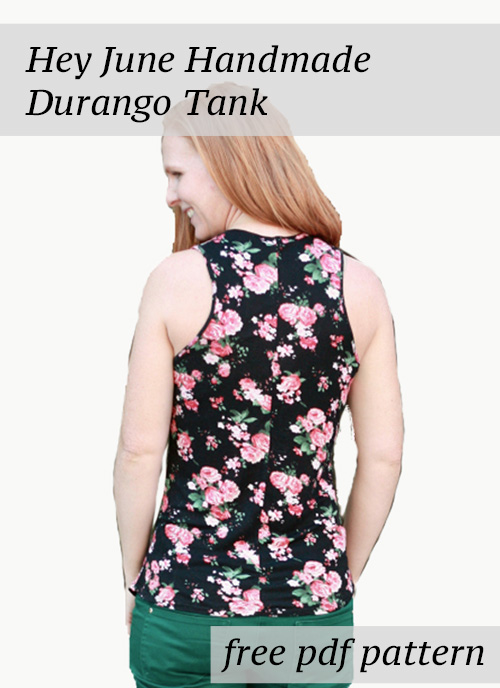
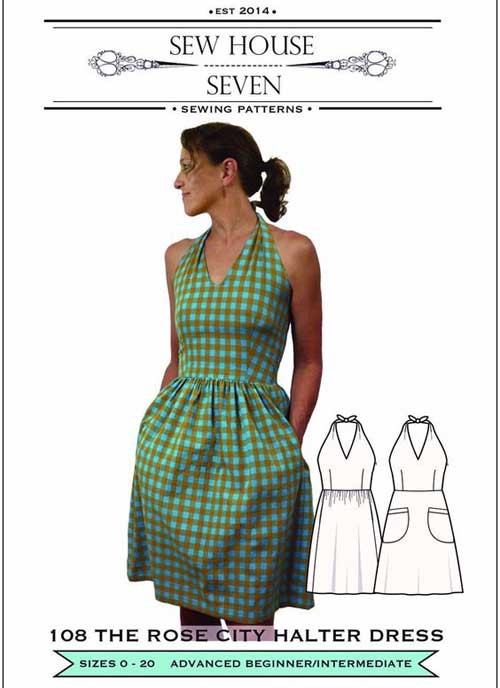
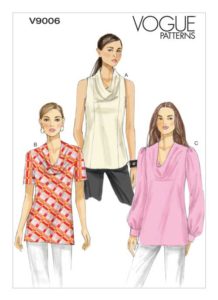
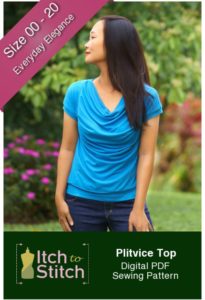
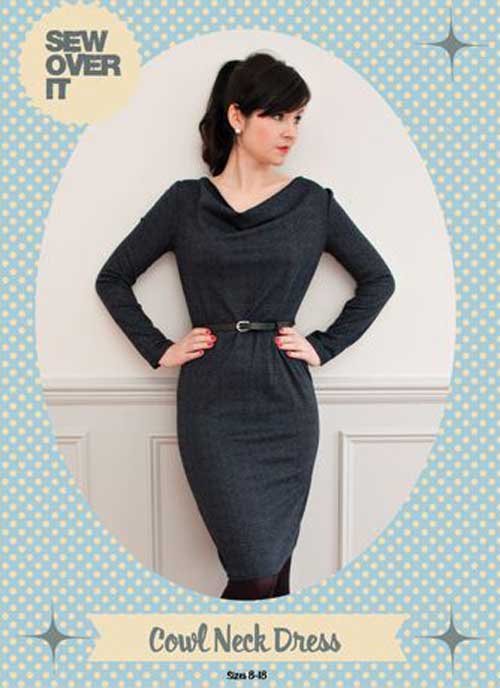
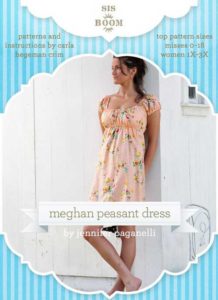
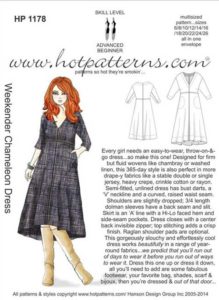
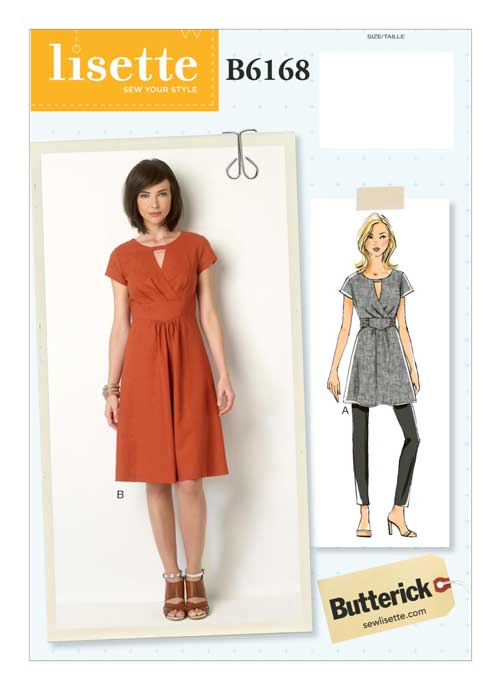
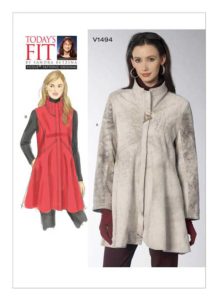
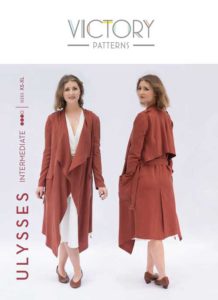
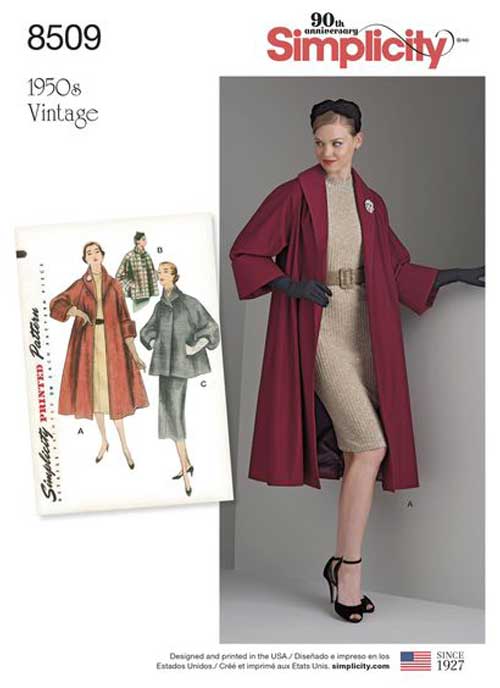
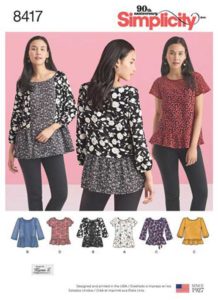
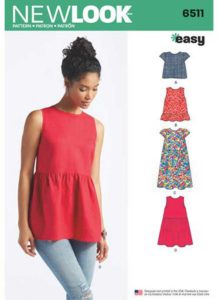
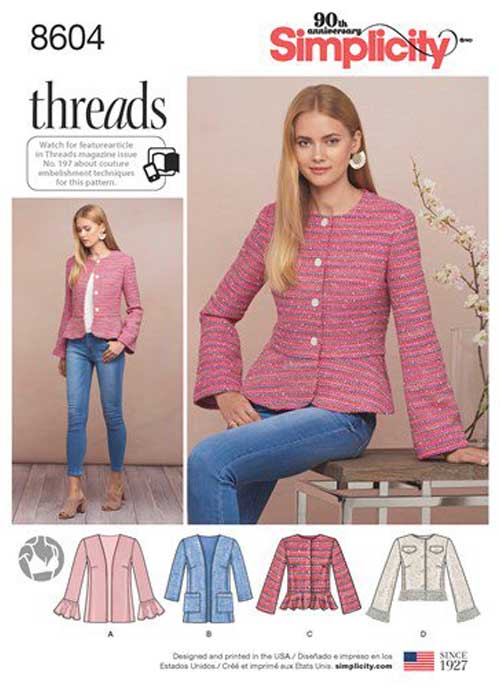
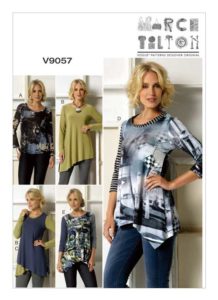
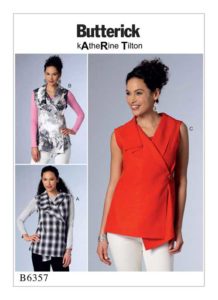
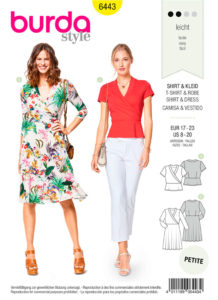
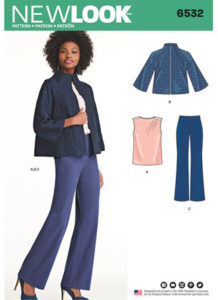
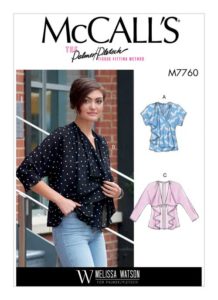
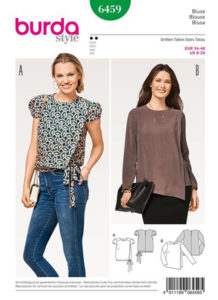
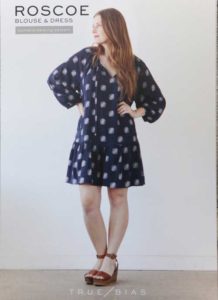
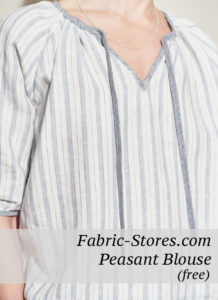
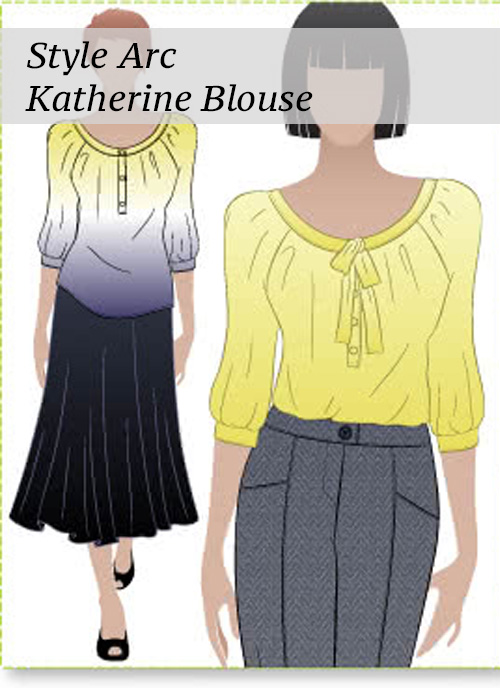
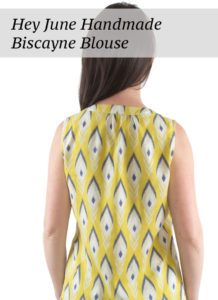
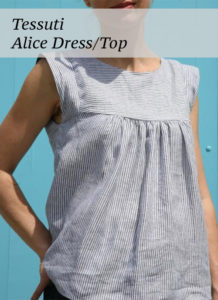
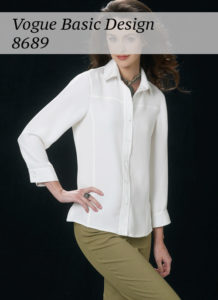
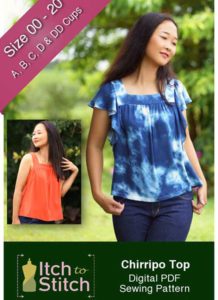
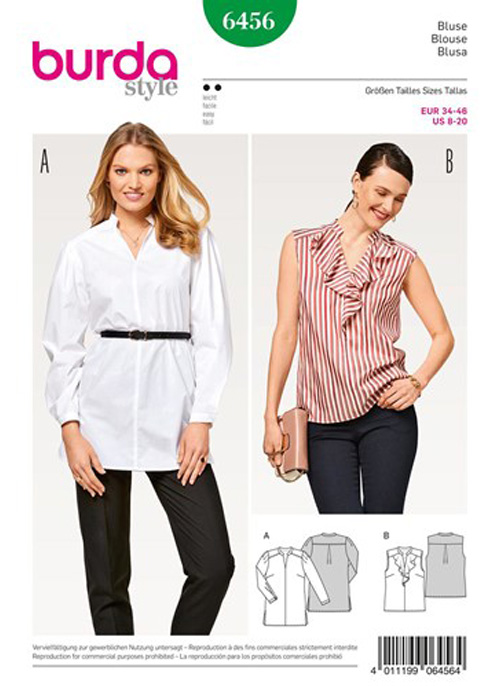
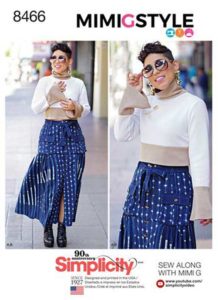
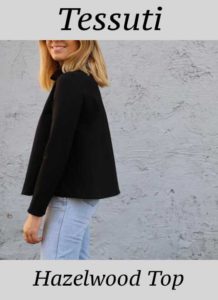
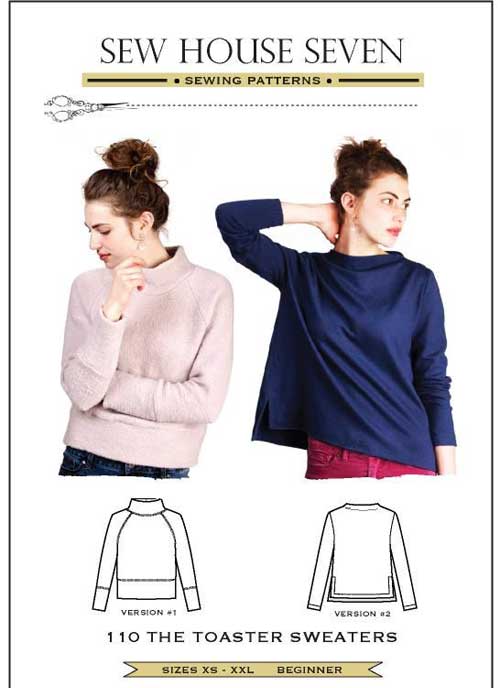
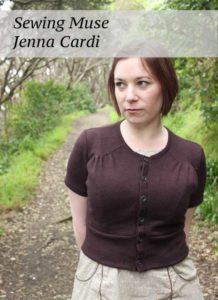
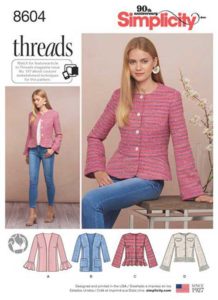
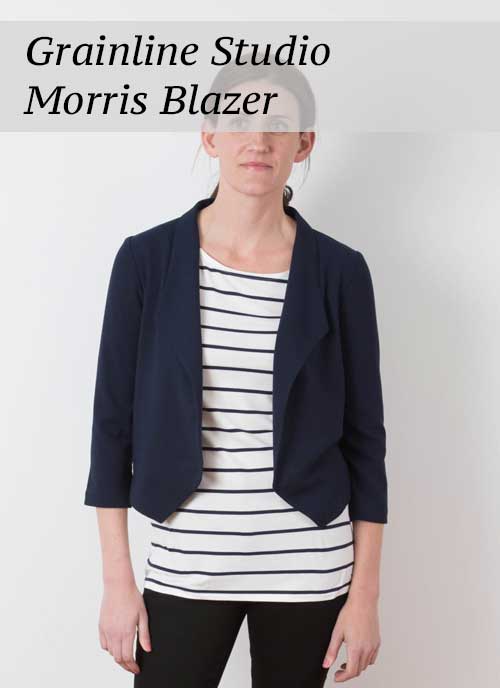
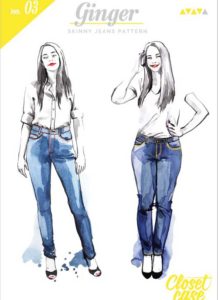
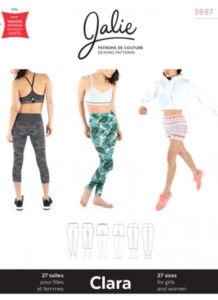
Help! What would this top style be called? (see link) https://us.shein.com/Polka-Dot-Cami-Top-Pants-Set-p-2276723-cat-1780.html?scici=productDetail~~RecommendList~~RS_own,RJ_NoFaultTolerant~~Customers%20Also%20Viewed~~SPcProductDetailCustomersAlsoViewedList~~0
I’ve been trying to find more like it, but I’m not sure what to search! By the way, all your suggestions are great!
It’s a camisole with a deep flounce. If you sew you could start with a plain camisole pattern and draft a flounce to add to it. Or here are a few patterns that are similar that could be changed or tried out as is.
I did find a pattern very similar but it seems to be out of print (not sure). You could try etsy, ebay or the like the company is Republique du Chiffon (their site is wonky or I would give you a link to the pattern) and the pattern is called the Camille You can see it on Instagram search #CAMILLEPATTERN
Burda Style has a lot of feminine styles and might be worth a deeper look but I found this which is similar: https://www.burdastyle.com/crepe-top-124-06-16.html
And this which is almost exact, you just have to shorten it (it says silk but you could make it from rayon): https://www.burdastyle.com/silk-top-105-07-19.html
Also there was a blouse (with sleeves) with a deep front flounce: https://www.burdastyle.com/cotton-blouse-114-03-19.html
Here is a simple camisole pattern that is one loose layer instead of one base layer with a flounce: https://www.fibremood.com/en/patterns/539-sara-top
Not what you were looking for but a cute sleeveless top with vertical flounces: https://www.stylearc.com/shop/sewing-patterns/sutton-woven-cami/
I hope this helps. I’m glad you liked the post. It’s due for an update
thank you so much for giving detailed information
🙂
Thank you for this good detailed information on which clothes should a woman with scoliosis should wear! 🙂
I hope it is helpful.
Terrific post – just what I have been looking for to confirm what I am learning as I draft my own slopers and patterns. I knew I had mild scoliosis as a teen – but back in the 70s – it was brushed aside as a non issue We were wearing jeans and our dad’s flannel shirts. Alas. never connected that small curve to my fit problems – I just blamed myself for poor posture or carrying a few extra pounds or having an “odd body” with a high waist and flatter lower back. Little did I know that almost no one fits exactly within the “average proportions” and also scoliosis introduces some unusual effects such as asymmetry. I did find ways to work with styles like layering. However, all the points you mention reaffirm my experiments over time and so glad to understand and work with the actual “geometry” of my particular body along with methods to create pleasing (to my own eye) proportions and comfort/ease in wearing. No more tugging at shoulders or wearing over-large clothes to camouflage. Such a relief to know any volume on the body can be draped to its particular advantage using tips and tricks like those mentioned in this post!
Particularly helpful is your tip about racerback bras/tanks! Recently bought some of each – was delighted in how they look and now I understand why.. Most important, they do feel so much better on the upper back as one of my shoulder blades does protrude more. no more slipping straps and a really feminine halter look with a high front neckline and scooped out armholes. The back hangs straight down nicely to the hip without fabric pooling at back waistline (due to curved upper back transition to the flatter low back.)
I’m excited to read your comment. It’s all very interesting, how we’re shaped and what we like, and how to make those come together. I love how you figured it out. And genius halter top idea. I just had my eye on simplicity’s #8645 vintage halter pattern. It has a Claire McCardell vibe and now I’m definitely going to scoop it up (when they have their next sale ;-). I have a friend who recently realized how well sleeveless garments fit her due to her shoulders, chest,& back proportions and I challenged/teased her to make sleeveless her signature style 😉 But why not? Sleeveless jumper type dresses with a knit top under in the fall, and a cardigan over sleeveless in the spring 😉 That’s the thing about sewing our own clothes, we can make our own style.
Hi, lovely read thank you, I wonder if you can help or point me in the right direction, I don’t have scoliosis but unfortunately I do suffer from Osteoporosis and I have 3 fractures in my spine. I have tried to find someone who can help with fitting a pattern to my shape and it’s extremely difficult!! my low back is vey painful and I have a curve upper back, my tummy comes up at the front to meet my bust so it’s really difficult for me to find anything to fit but I am a keen dressmaker, always have been but this new problem has me beat!!
Hello Angie, I don’t have a quick answer but a couple things come to mind; BootStrapFashion.com Makes custom fit patterns. I have never used it but you put in your measurements for a pattern they offer and they print it to fit you. I would choose a basic shape pattern, but one with style seams like princess, or empire waist to try. The style seams can help with tucking in or letting out where you need to for your body. (Example, a large busted but petite friend does great with princess seams because she can add width to those seams at the widest part of her bust and still keep shape below and above the bust).
Another idea is a personalized online class like Learn with Brooks Ann (I know a few women who have taken her course and found it very helpful). Unlike a Craftsy class where you won’t get any help.
Dressmakers – wedding dressmakers too – might be willing to drape a sloper for you or make a very basic muslin dress for you that you could be the base/pattern for tops and other dresses – changing some details for different looks.
I hope this is helpful and thanks for the comment
What wonderful information for those of us with Scoliosis. I have started to sew again in the last few years. This site is a good reference for tips and ideas
Thank you. I’m really glad this post is helpful